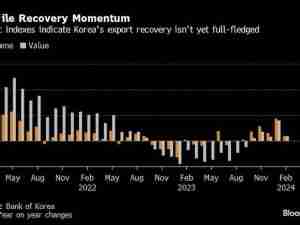The Russian ruble has wiped out the steep losses it incurred in the weeks after President Vladimir Putin sent troops into Ukraine.
The currency advanced past 81.16 per U.S. dollar in Moscow trading, the level it closed at on Feb. 23—the day before Putin launched his attack. The ruble’s gains on Wednesday came even as the European Union and the U.S. coordinated a new raft of sanctions against Russia, while the Finance Ministry said its attempt to service debt in dollars had been blocked, potentially moving the country closer to default.
The ruble went into a nosedive immediately after the invasion on Feb. 24 amid a raft of international sanctions that effectively ended its time as a freely traded currency.
But tough capital controls—including a ban on foreigners selling Russian assets as well as mandated hard currency sales by exporters—have helped the ruble to regain ground. Last month, Putin demanded that overseas buyers of Russian natural gas switch to making payments in the local currency.
The onshore rate came close to 122 per dollar in early March, a more than 30% collapse from the level before the attack. While offshore price sources at various points indicated even weaker levels, liquidity was severely hampered.







